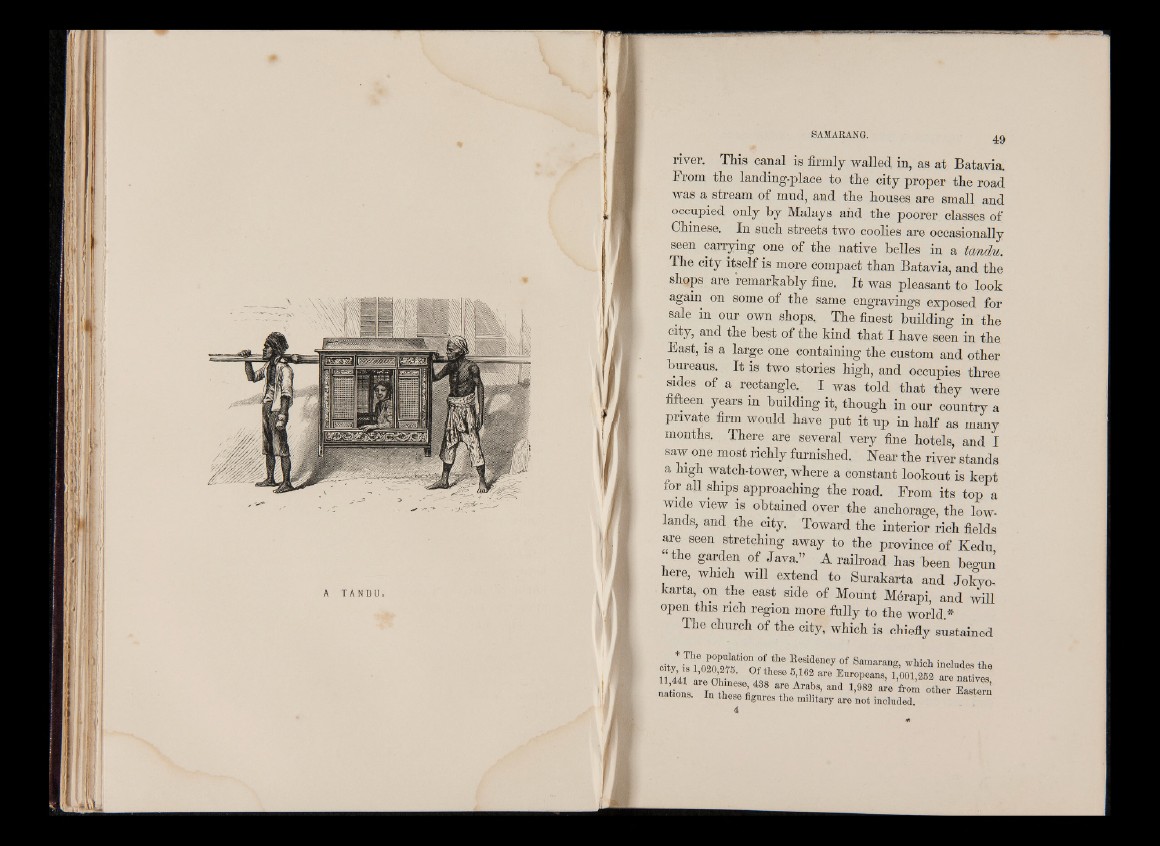
SAMAKANG.
nr;
river. This canal is firmly walled in, as at Batavia.
From the landing-place to the city proper the road
was a stream of mud, and the houses are small and
occupied only hy Malays and the poorer classes of
Chinese. In such streets two coolies are occasionally
seen carrying one of the native belles in a tandu.
The city itself is more compact than Batavia, and the
shops are remarkably fine. It was pleasant to look
again on some of the same engravings exposed for
sale in our own shops. The finest building in the
city, and the best of the kind that I have seen in the
East, is a large one containing the custom and other
bureaus. It is two stories high, and occupies three
sides of a rectangle. I was told that they were
fifteen years in building it, though in our country a
private firm would have put it up in half as many
months. There are several very fine hotels, and I
saw one most richly furnished. Near the river stands
a high watch-tower, where a constant lookout is kept
for all ships approaching the road. From its top a
wide view is obtained over the anchorage, the lowlands,
and the city. Toward the interior rich fields
are seen stretching away to the province of Kedu
the garden of Java.” A railroad has been begun
here, which will extend to Surakarta and Jokyo-
karta, on the east side of Mount M^rapi, and will
open this rich region more billy to the world *
The church of the city, which is chiefly sustained
H B r M r i V * * 1 SamaranS’ which includes the
11 4A1 ’ heSS 6’162 are Europeans, 1,001,252 are natives
,441 are Chinese, 488 are Arabs, and 1,982 are from other Eastern
nations. In these figures the military are not included
4